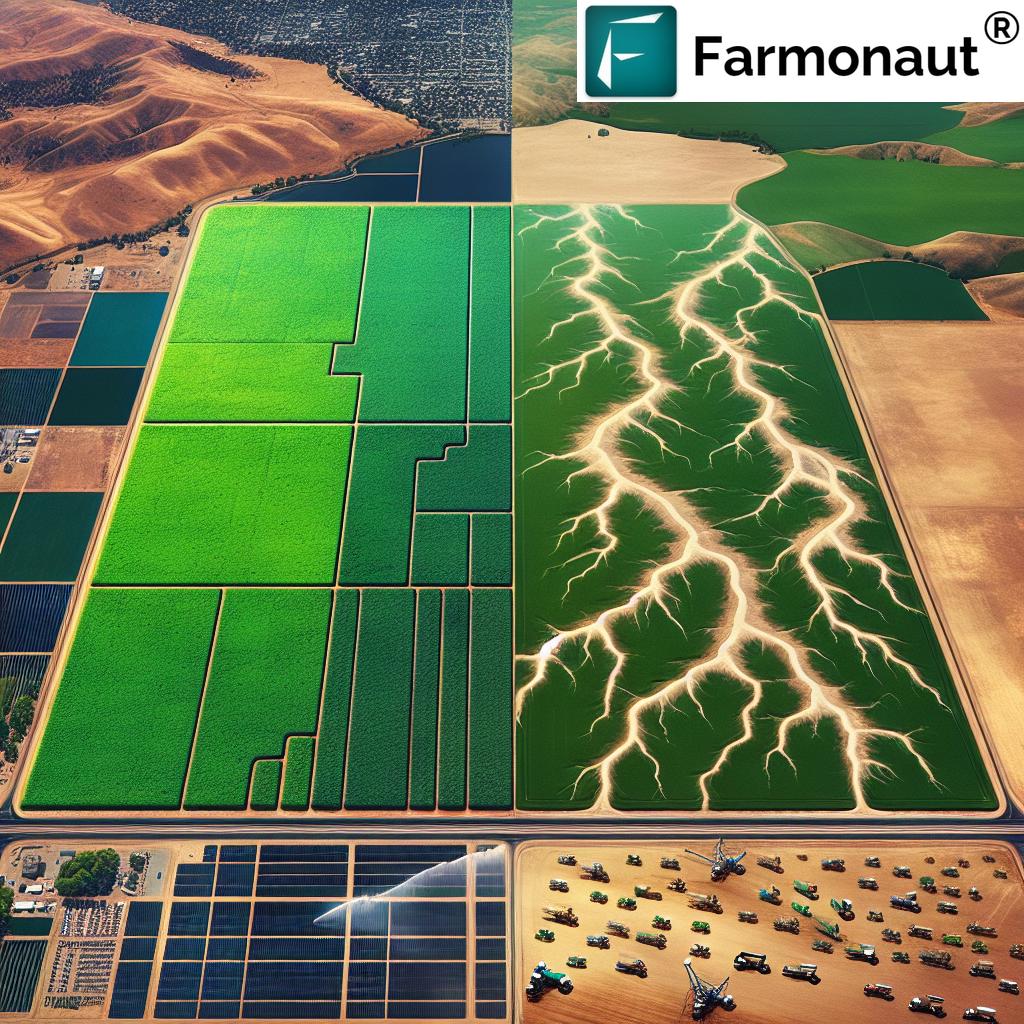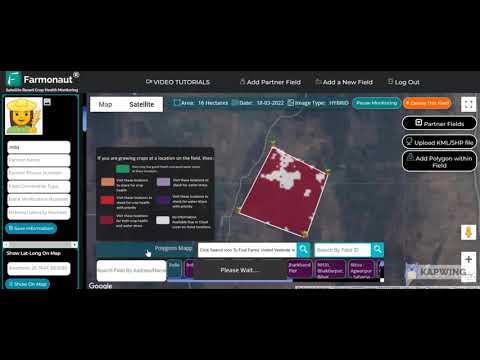Navigating Alfalfa Yields: California, Wisconsin, and Vermont’s 2015 Forage Production Trends Amid Drought and Market Shifts
“In 2015, Wisconsin experienced favorable alfalfa yields, while California faced drought-impacted production across its forage fields.”
Welcome to our comprehensive analysis of alfalfa production trends and forage quality management across three key states in the United States during 2015. As we delve into the intricacies of forage production in California, Wisconsin, and Vermont, we’ll explore the challenges and opportunities that shaped the agricultural landscape that year.
In this blog post, we’ll navigate through the complex interplay of weather patterns, market dynamics, and agricultural practices that influenced alfalfa and forage production. From the scorching heat of Southern California to the more favorable conditions in Wisconsin and the variable harvests in Vermont, we’ll provide insights into how farmers adapted to these diverse challenges.
Regional Overview: California, Wisconsin, and Vermont
Let’s begin by examining the unique situations each state faced in 2015:
- California: Grappled with severe drought conditions, particularly impacting Southern California and the Central Valley.
- Wisconsin: Enjoyed relatively favorable weather, leading to good alfalfa yields.
- Vermont: Experienced variable corn harvests due to fluctuating weather patterns.
These regional differences set the stage for a year of contrasts in forage production across the country.
The Impact of Weather on Crop Yields
Weather played a crucial role in shaping the 2015 forage production landscape. Let’s break down the weather effects on crop yields state by state:
California: Battling Drought and Heat
The Golden State faced significant challenges due to persistent drought conditions:
- Southern California and the Central Valley were hit hardest by the drought.
- Scorching temperatures in desert areas further stressed alfalfa crops.
- Limited water availability forced farmers to make tough decisions about irrigation.
The drought’s impact on California’s agriculture was profound, with many farmers reporting lower yields and reduced acreage for alfalfa production. The Intermountain area and some desert basins fared slightly better, but overall, the state’s alfalfa production was significantly affected.
Wisconsin: Favorable Conditions Lead to Strong Yields
In contrast to California, Wisconsin experienced more favorable weather for alfalfa production:
- Adequate rainfall throughout the growing season supported healthy crop growth.
- Moderate temperatures allowed for excellent regrowth between cuttings.
- Farmers reported good to excellent yields across much of the state.
The favorable conditions in Wisconsin led to a strong year for alfalfa production, with many farmers able to harvest multiple high-quality cuttings.
Vermont: Variable Weather Leads to Mixed Results
Vermont’s weather patterns in 2015 created a mixed bag for forage producers:
- Some areas experienced adequate rainfall, while others faced drier conditions.
- Corn silage yields varied significantly across the state.
- Alfalfa production was generally stable but showed regional variations.
The variable weather in Vermont highlighted the importance of adaptable crop management strategies for farmers in the region.

Market Dynamics and Dairy Industry Challenges
The forage production landscape in 2015 was not only shaped by weather but also by significant market forces and challenges within the dairy industry. Let’s explore the key factors influencing hay pricing and markets:
Milk Prices and Their Impact on Forage Demand
In 2015, the dairy industry faced significant challenges due to low milk prices:
- Depressed milk prices put financial pressure on dairy farmers.
- This led to reduced demand for premium-quality alfalfa in some regions.
- Farmers sought to balance feed costs with milk production efficiency.
The situation created a complex market dynamic where high-quality forage still commanded a premium, but overall demand was tempered by the dairy industry’s economic challenges.
Export Markets and Global Demand
The export market played a crucial role in shaping alfalfa prices and production decisions:
- A strong U.S. dollar made exports more expensive for international buyers.
- China, a significant importer of U.S. alfalfa, showed fluctuating demand.
- Export quality hay continued to command higher prices despite market challenges.
Farmers, particularly in export-oriented regions like California, had to navigate these international market dynamics while managing their production strategies.
Regional Price Variations
Hay and forage prices varied significantly across the three states:
- California saw higher prices due to drought-induced scarcity, especially for top-quality hay.
- Wisconsin’s favorable production led to more stable pricing, with slight pressure on lower-quality forage.
- Vermont’s prices reflected the variable production conditions and local dairy industry demands.
These price variations underscored the importance of quality management and market awareness for forage producers.
Crop Management Strategies and Technological Innovations
In response to the challenges of 2015, farmers across California, Wisconsin, and Vermont implemented various crop management strategies and embraced technological innovations to optimize their forage production. Let’s explore some of these approaches:
Precision Agriculture Technologies
The adoption of precision agriculture technologies played a crucial role in helping farmers navigate the challenging conditions of 2015:
- Satellite-based crop monitoring systems provided real-time data on crop health and soil moisture.
- GPS-guided equipment improved planting and harvesting efficiency.
- Data-driven decision-making tools helped farmers optimize resource allocation.
These technologies were particularly valuable in drought-stricken areas of California, where every drop of water counted. In this context, Farmonaut’s satellite-based farm management solutions could have provided crucial insights for farmers dealing with water scarcity and variable growing conditions.
Sustainable Forage Production Practices
Farmers increasingly turned to sustainable forage production methods to maintain yields while conserving resources:
- Improved irrigation techniques, such as drip irrigation, were adopted to maximize water efficiency.
- Cover cropping and no-till practices helped conserve soil moisture and improve soil health.
- Crop rotation strategies were employed to optimize nutrient use and break pest cycles.
These sustainable practices not only helped farmers weather the challenges of 2015 but also set the stage for long-term improvements in soil health and water conservation.
Adaptive Cutting and Harvesting Strategies
Farmers adjusted their cutting and harvesting strategies to maximize yield and quality under varying conditions:
- In drought-affected areas, some farmers opted for fewer cuttings to conserve water.
- Wisconsin farmers took advantage of favorable conditions to optimize cutting schedules for maximum quality.
- Vermont producers balanced cutting timing with weather forecasts to ensure optimal drying conditions.
These adaptive strategies highlighted the importance of flexibility and real-time decision-making in forage production.

Regional Agricultural Forecasts and Future Outlook
As we analyze the trends of 2015, it’s important to consider the regional agricultural forecasts and how they might shape the future of forage production in California, Wisconsin, and Vermont. Let’s explore the outlook for each state:
California: Adapting to Long-Term Water Challenges
The ongoing drought in California had significant implications for future agricultural planning:
- Increased focus on drought-resistant alfalfa varieties and water-efficient irrigation systems.
- Potential shifts in crop selection towards less water-intensive options.
- Growing interest in technologies for precise water management and crop monitoring.
The potential influence of El Niño weather patterns offered hope for drought relief, but long-term water management remained a critical concern for California’s agriculture sector.
Wisconsin: Capitalizing on Favorable Conditions
Wisconsin’s positive experience in 2015 set the stage for continued strong forage production:
- Increased investment in soil health and sustainable farming practices to maintain high yields.
- Exploration of new alfalfa varieties to further improve quality and yield potential.
- Growing adoption of precision agriculture technologies to optimize inputs and increase efficiency.
While the outlook was generally positive, Wisconsin farmers remained vigilant about potential weather extremes and market fluctuations.
Vermont: Preparing for Climate Variability
Vermont’s agricultural forecast emphasized adaptability in the face of changing climate patterns:
- Increased focus on diversified cropping systems to mitigate risk.
- Growing interest in season extension techniques for forage production.
- Exploration of new crop varieties better suited to variable weather conditions.
Vermont’s agricultural community looked towards building resilience in their farming systems to better withstand future climate-related challenges.
The Role of Technology in Modern Forage Production
As we’ve seen throughout this analysis, technology plays an increasingly vital role in modern forage production. Innovative solutions like those offered by Farmonaut are transforming how farmers approach crop management and decision-making.
Satellite-Based Crop Monitoring
Satellite technology offers unprecedented insights into crop health and field conditions:
- Real-time vegetation health indices (e.g., NDVI) help farmers identify problem areas quickly.
- Soil moisture monitoring aids in irrigation planning and water conservation efforts.
- Historical satellite data allows for trend analysis and long-term planning.
These capabilities are particularly valuable in regions facing water scarcity or unpredictable weather patterns.
AI-Powered Advisory Systems
Artificial intelligence is revolutionizing farm management:
- AI algorithms can analyze multiple data points to provide personalized crop management recommendations.
- Predictive analytics help farmers anticipate potential issues before they become serious problems.
- Machine learning models continuously improve their accuracy as more data is collected.
These AI-driven insights can be crucial for optimizing yields and resource use in challenging growing conditions.
Blockchain for Traceability and Market Access
Blockchain technology is opening new possibilities for forage producers:
- Enhanced traceability can help premium hay producers differentiate their products in the market.
- Improved supply chain transparency can facilitate more efficient hay and forage trading.
- Blockchain-based systems can streamline certification processes for organic or specialty forages.
As markets become more globalized, these traceability features can provide a competitive edge for quality-focused producers.
Explore Farmonaut’s API for advanced agricultural data access
“Vermont’s corn harvests in 2015 showed variable yields, influenced by regional weather patterns and market shifts in the dairy industry.”
Comparative Analysis: California, Wisconsin, and Vermont
To better understand the regional differences in alfalfa production during 2015, let’s examine a side-by-side comparison of these three states:
| State | Estimated Yield (tons/acre) | Weather Impact | Market Influences | Production Challenges | Crop Management Strategies |
|---|---|---|---|---|---|
| California | 6.5 | Severe drought, high temperatures | Strong export demand, high prices for premium hay | Water scarcity, reduced acreage | Water-efficient irrigation, drought-resistant varieties |
| Wisconsin | 4.8 | Favorable rainfall, moderate temperatures | Stable local demand, pressure on low-quality hay prices | Managing surplus production | Optimized cutting schedules, focus on quality |
| Vermont | 3.2 | Variable weather patterns | Fluctuating dairy industry demand | Unpredictable growing conditions | Diversified cropping, adaptive harvesting |
This comparison highlights the stark differences in production conditions and challenges faced by farmers across these three states in 2015. It underscores the importance of region-specific strategies in forage production and the need for adaptive management practices.
Lessons Learned and Future Directions
The experiences of 2015 offer valuable lessons for the forage production industry:
1. Importance of Resilience
The contrasting conditions across states emphasized the need for resilient farming systems that can withstand various environmental stresses.
2. Value of Diversification
Farmers who diversified their cropping systems or market approaches were better positioned to navigate the challenges of 2015.
3. Technology as a Game-Changer
The adoption of precision agriculture technologies proved crucial in optimizing resource use and managing crops under difficult conditions.
4. Market Adaptability
Successful producers demonstrated the ability to pivot their marketing strategies in response to changing local and export demands.
5. Sustainable Practices Pay Off
Investments in soil health and water conservation not only helped during the challenging year but also set the stage for long-term farm sustainability.
The Path Forward: Embracing Technology and Sustainability
As we look to the future of forage production, several key trends emerge:
- Increased Adoption of Precision Agriculture: Tools like Farmonaut’s satellite-based crop monitoring will become increasingly crucial for efficient farm management.
- Focus on Water Efficiency: Especially in drought-prone areas, water-saving technologies and practices will be at the forefront of agricultural innovation.
- Climate-Smart Agriculture: Farmers will increasingly adopt practices that not only adapt to climate change but also contribute to its mitigation.
- Data-Driven Decision Making: The integration of big data and AI in agriculture will enable more precise and timely farm management decisions.
- Sustainable Intensification: Producers will seek ways to increase yields while minimizing environmental impact through innovative farming practices.
By embracing these trends and leveraging technologies like those offered by Farmonaut, forage producers can build more resilient, efficient, and sustainable farming operations.
Check out Farmonaut’s API Developer Docs for integrating agricultural data into your applications
Conclusion
The 2015 forage production season in California, Wisconsin, and Vermont served as a microcosm of the challenges and opportunities facing modern agriculture. From severe drought to favorable yields, and from market pressures to technological innovations, the year highlighted the complex interplay of factors that shape agricultural outcomes.
As we move forward, the lessons learned from 2015 continue to inform agricultural practices and policy. The increasing role of technology, exemplified by platforms like Farmonaut, points to a future where data-driven decision-making and precision agriculture become the norm rather than the exception.
For farmers, industry professionals, and policymakers alike, staying informed about regional trends, embracing sustainable practices, and leveraging cutting-edge technologies will be key to navigating the ever-changing landscape of forage production. By doing so, we can work towards a more resilient, productive, and sustainable agricultural future.
FAQs
- Q: How did the 2015 drought in California affect alfalfa production?
A: The drought severely impacted alfalfa production in California, leading to reduced yields, especially in Southern California and the Central Valley. Farmers faced water scarcity issues and had to make difficult decisions about irrigation and acreage allocation. - Q: What factors contributed to Wisconsin’s favorable alfalfa yields in 2015?
A: Wisconsin benefited from adequate rainfall and moderate temperatures throughout the growing season, allowing for excellent crop growth and multiple high-quality cuttings. - Q: How did milk prices affect forage demand in 2015?
A: Low milk prices in 2015 put financial pressure on dairy farmers, leading to reduced demand for premium-quality alfalfa in some regions as farmers sought to balance feed costs with milk production efficiency. - Q: What role did export markets play in alfalfa production decisions in 2015?
A: Export markets, particularly demand from China, significantly influenced production decisions, especially in export-oriented regions like California. However, a strong U.S. dollar made exports more expensive for international buyers. - Q: How did farmers adapt their crop management strategies to the challenges of 2015?
A: Farmers adopted various strategies, including precision agriculture technologies, sustainable farming practices, and adaptive cutting and harvesting techniques. Many also invested in water-efficient irrigation systems and explored drought-resistant crop varieties.
Farmonaut Subscriptions






